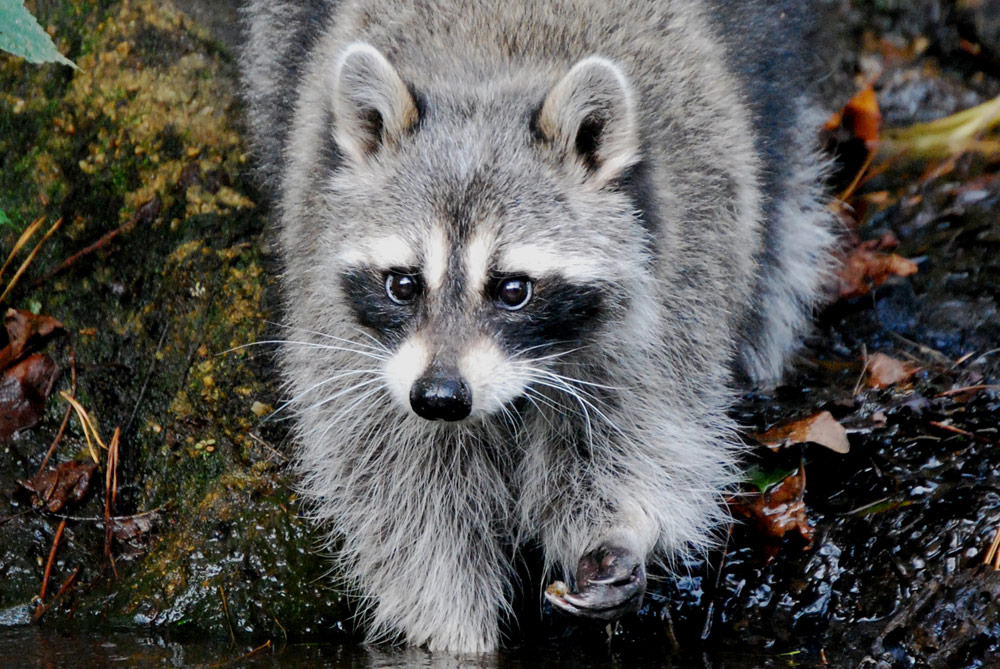Category:
MammalsAbout
Raccoon
The raccoon (Procyon lotor) is one of the few examples of an animal that has thrived despite human development and sprawl.
With its intelligence and adaptability, the raccoon finds its niche in both our backyards and in its normal habitats of stream edges, forests and coastal marshes. Our yards provide homes in chimneys, attics, sheds and log piles. We provide food and drink with bird feeders, pet food, birdbaths, trashcans and garden ponds.
The raccoon is most easily recognized by its dark mask outlined in white and its four to six rings on the tail. This animal is found throughout the United States and into southern Canada.
One reason raccoons are so successful is that they are true omnivores. They eat a huge variety of foods, including fruits and berries, nuts, grubs, crayfish and mussels, bird’s eggs and baby birds, and even small mammals.
Raccoons have extremely dexterous front paws and can easily manipulate objects. They often appear to be “washing their hands” when they are at the water’s edge. They are actually just naturally foraging and manipulating possible food items to better inspect them with their sensitive paws.
Raccoons have no significant predator in the wild. The main threats to them include automobiles, disease and parasites, and harsh winters. A typical raccoon may only live two to three years in the wild. They range in weight from eight to 25 pounds as adults.
Raccoons are chiefly nocturnal, but if their daytime denning area is disturbed or they are particularly hungry, they may be seen roaming during the day.
Raccoons typically have young in March through June, with a litter size of two to five. The kits are usually weaned by late summer. They often stay with the mother through their first winter. Juvenile raccoons are very vocal and can sometimes be heard churring and screeching at night.
Raccoons never make good pets. They can become increasingly aggressive as they get older. They are powerful animals that can do a lot of damage. Also, many people are unaware that raccoons can harbor a roundworm (Baylisascaris procyonis) that is fairly harmless to the raccoon, but can cause central nervous system damage in humans.
The raccoons at the Virginia Living Museum swim, forage for food, climb trees and nap. We enrich their days with crayfish, mussels, hard-boiled eggs, peanut butter and other creative activities.






